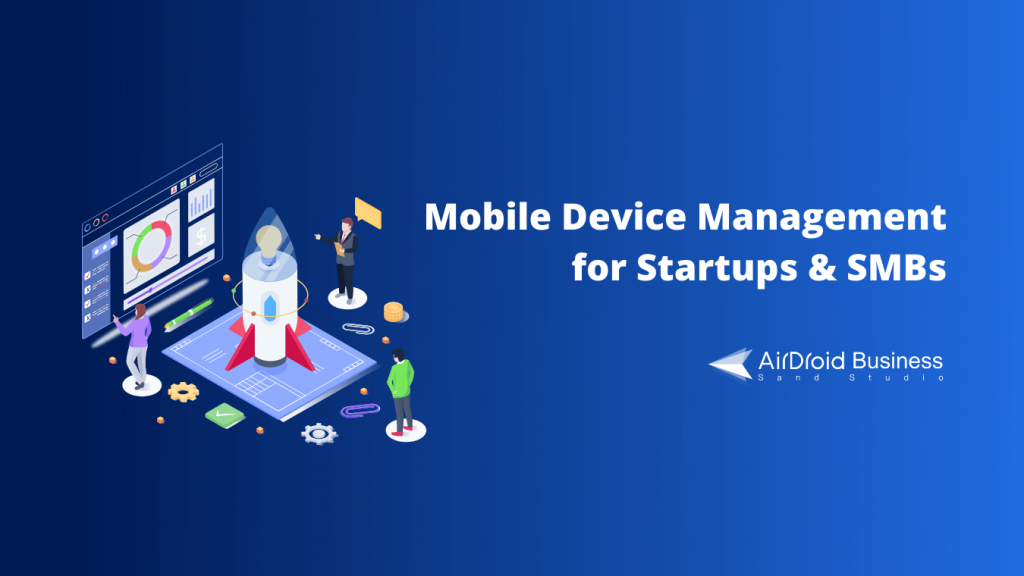Last Updated on September 7, 2022

Many business startups and SMBs find multiple hurdles during their initiation into the world of enterprise. Survival rates may diminish for different factors, and the first few years are met with difficulties. Investment rates may be low, but they are also a necessity if they wish to start on the right footing. To successfully solve these difficulties, strategies are needed from day one, to help find and retain customers, generate leads, or build an email list. Secondly, a strategy to develop and implement software and device management is also key, to establishing a way through the conflicts of business in the early days.
Startups refer to businesses that are in their early days of enterprise, whilst SMBs refer to businesses that are small and medium-sized businesses. Both of the above are often faced with common challenges that require diligent business strategies. Without a clear path, there may be breakdowns of communication, financial issues, poor customer service, slow and glitchy software; all of which promote a lack of business efficiency. When we talk about business, we talk about time which is ultimately, money. We are aware that businesses that are not massive in size will need an excellent routine that will eliminate any issues. If you are a smaller business, then you may already be aware that areas are failing, or that you perhaps need an overhaul of technology. Maybe you should start a strategy that will offer you a solution.
Common challenges faced by startups and SMBs
There is a deluge of challenges that younger businesses face. These “problems” however can be rectified. However, identifying the first and foremost is vital if a business hopes to adapt to the new needs of the organization or to focus on any kind of expansion. Here are some of the most common challenges:
- Maintain the sustained growth of the company
- Customer service, productivity, and failures in the communication of external and internal clients
- Weaknesses in the administrative and operational controls of the company
- Lack of time and work management controls
- Absence of dynamic reports and data capture in real-time
- Increase in operational and administrative costs
- Complex and slow data processing
- Management of operational and administrative personnel
- Remote communication with technical and administrative staff is poor or absent

Managing company devices can be a challenge
Many smaller companies tend to lack sophisticated IT departments. Therefore when they are managing their devices, such as mobiles, tablets, and computers, there may be issues with software, breakdowns and therefore, there just isn’t the manpower to be able to communicate well and fix these issues promptly. After all, business mobility and remote working require a few new things now. Businesses must try to meet increasing market demands for greater and better integration of existing IT structures with mobile technologies.
Company devices are now linked to mobility and therefore exceptional MDM management is going to be the best option for SMBs and startups from the outset. Using the best resources for your IT is going to be a brilliant move. The need for technical support and management of personal devices is important because it will be how you first make communication, how you work with customers, and how you delegate tasks.
“What are the top ways small business owners use mobile devices for business? By far and away, communicating with customers and/or scheduling appointments top the list, used by 55.5 percent of small business owners. About 30 percent use their mobile devices to create notes or to-do lists; 29 percent use them to manage or monitor social media, and 24 percent use them for banking.” According to All Business.
All of the above, require companies to adopt a “mobile business strategy”. That is because they are so popular with businesses and with remote work becoming more economical, mobile devices are important. So what does a strategy such as this offer a company? This must primarily begin with the definition of mobile business policies aimed at reducing risks and mobile protection. You may have heard of the term MDM solutions. This is the very best place to begin if you want to start on the right foot with your SMB.
What is MDM? What does it do?
Mobile communications devices work with a combination of local and remote components that must be configured to interact if the device is to function properly. As a basic set of components, the mobile device management process will include monitoring of some type of server component and a client component. The server is the one that receives and transmits the management commands to the real device. At the opposite extreme, the client component receives the commands, transmits the data to the appropriate programs running on the device, and executes a command to obey the commands. Essentially, you can control and run your mobile devices, easily and effectively.
Mobile device management, or MDM solutions, simplifies enterprises’ tasks because of their comprehensive and efficient systems that allow businesses to track locations, monitor their software, and offer mobility. This direct link now cuts down the need for added workers, time lost through technical glitches and instead, allows a business to have continuous control. MDM simplifies each process, for example, IT admins are able to remove tedious issues and control multiple devices at once. When you enforce these tools, a business can use centralized cloud-based content management to provide efficiency. In a real-life day-to-day issue, one example may be that a company can keep track of their vehicle fleet and their drivers, by geotagging and locating as well as being able to access all the files on the go. It assists with remote work and MDM solutions simplify these tasks; so each employee can truly concentrate solely on their own job remit. It saves time and money.
Along with remote configuration and provisioning of new applications, mobile device management can also be used to back up files and applications to a remote location, recover those copies in case data needs to be restored to the mobile device and even manage remote software installation to update apps that are already on the device. Remote diagnosis is also possible within the perimeters of mobile device management, which means that many operational issues that used to require sending the mobile device to a service center can now be diagnosed and repaired in a remote environment.
How can MDM be beneficial to startups and SMBs?
Let’s take a look at some of the benefits that startups and SMBs can benefit from. After all, the chances are that you will not have the capital to immediately sink into your business, so you need to work out what is best for your type of business. Here are some of the biggest benefits that you should consider:
- Better application management: Download and assign applications to your employees from your MDM solution. This allows your company to take ownership of the applications and control the licenses.
- Improved device startup: Eliminate the steps of starting a new device. Avoid wasted time and confusion when delivering a new device and ensure that your team can use them effectively.
- Implementation of security functions: Geolocate, block, erase and reboot your devices remotely in real-time. Security is vital in a modern-day world.
- Better profile management: Create and configure profiles for different roles and associate them with the appropriate users. Start your devices without having to handle them. Your device deployments have never been easier.
- Better security management: Configure security policies. For example, Mandatory passwords on all devices to protect company data from external threats.
- Cellular Data Management: Control users’ cellular data usage. Enable and disable cellular data usage for all or some of the apps on your device.
- Access to an activity report: Track your mobile device usage with custom reports. (Example: real-time cellular data usage, idle devices, or the operating system of your devices.)
- Email management: Set up, secure, and manage your business email accounts. Avoid the disclosure of your company’s confidential information.
- Better inventory management: Provide complete visibility of all devices in circulation in your business. (Access to IMEI, SIM, User, Phone #, etc. with just a few clicks).

Things to consider before selecting an MDM solution
Installing an MDM program makes it easier to remotely manage and access mobile devices. It gives you a data management experience that was previously inaccessible to you also. This makes it possible to carry out simultaneous interventions also. For smaller businesses, this saves valuable time to use elsewhere when installing applications. The same benefit also applies to data transfer. After all, storing and transferring data is a vital element. Ensuring that you have secure data is going to be an asset to your customer base.
Furthermore, necessary repairs and modifications of configuration parameters will be met. So what must you consider as a business? You must have a strict plan in place and be sure that your solution can meet your needs. Do you need certain tasks automated? Do you want high-performance software? You want to have guaranteed optimal performance for users.
Characteristics you may want to consider
To provide quality services to their customers, MSPs must choose the best MDM software. Several criteria must be taken into consideration as startup solutions. It must be checked for compatibility with all existing operating systems and applications. Can the provider offer you this and will the programs be easy to maintain? The program should be easy to handle by different service providers. This makes it easier to identify faulty devices in order to carry out the required interventions.
As for the installation and updates of applications and OS, it is done automatically. MSPs can configure the small business software to easily add or remove from a device. In terms of functionality, this tool also includes support for mobile devices used for personal use. Many companies offer them to their employees on different occasions. In addition to this, you may want to look at the following:
- Types of the devices supported – Will you be able to support your laptops, mobile phones, work tablets, and maybe on-site mobile devices, too?
- Security Management – How much security is offered and will it be enough for the data that you have in your business?
- Trial Period – Do they offer a free trial and will they give you options if things do not work out as you may have planned from the start?
- App Management – Can you work remotely and manage all your apps and software easily and effectively? Is this something that you can
- Device Monitoring – Can you monitor your devices from anywhere at any place to see who is using what and if all your devices are working well?
- Content Management – Do you need support with content management? What is put out to your customers and how can you make sure it is an effective transition to MDM?
- Support and Service Management – If you have an issue at any time of the day, is it possible to access help? Do you need to ensure that your business will be up and running quickly? Time is money after all, and you need to know that you are well protected.

Conclusion
Overall, all startups and SMBs must consider their options wisely. We know in an ever-changing work environment, that compliance requirements are changing rapidly. Compliance alone can require a total effort, and the situation is particularly serious in large companies but for startups and SMBs, you must ensure that you can utilize data management to reduce the burden of recurring issues as early as possible. You must also meet the demands of your industry and the standards as set in business to succeed this way.
We know that MDM can improve your customer service, which is something you want to establish very early on with your customer base. That is why it is often highly recommended. Mobile device management interacts with customers at every stage of the transactional process, from initial interaction and it ensures all your facets of the business are working well. You can choose what parts of the services you want for your business and what is the most important step. You will want to surely eliminate pesky discrepancies and errors that can impact your business. Startups especially want to avoid this at all costs in those early days. When you start on the right footing, you will surely be able to follow your plans with better ease.
